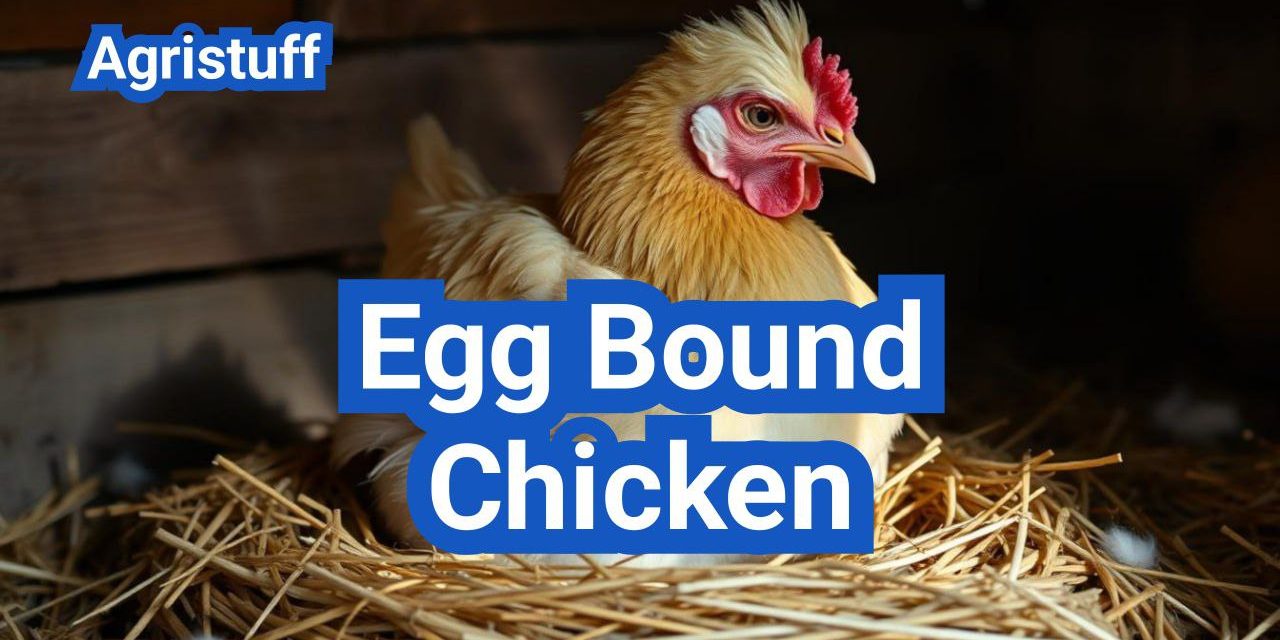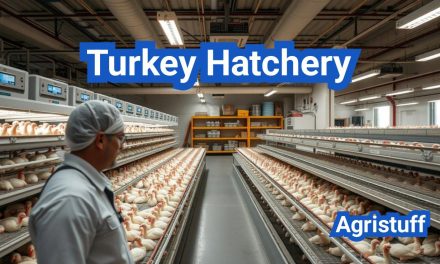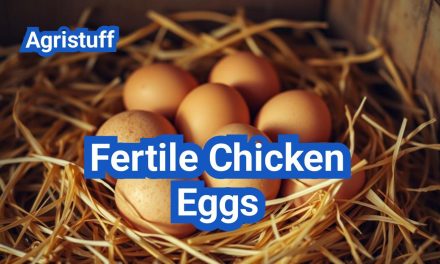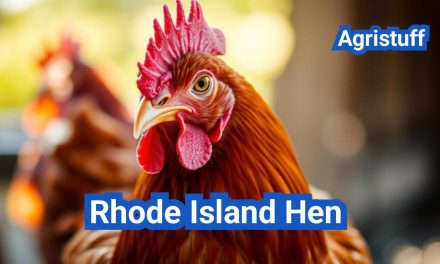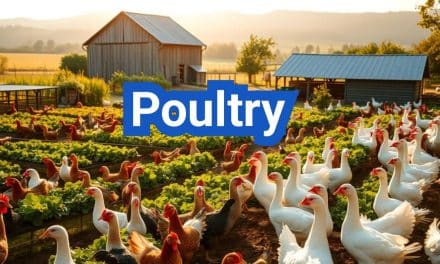Egg binding, also known as oviduct impaction, is a life-threatening condition in laying hens that requires immediate attention. It occurs when an egg gets stuck in the cloaca and cannot be laid, potentially leading to severe health complications or death.
Understanding the causes, symptoms, and treatment options is crucial for saving the hen’s life. Factors such as nutrition, calcium deficiency, and reproductive health issues can contribute to egg binding.
Recognizing the signs of egg binding, such as straining, lethargy, or abnormal egg laying, is vital for prompt intervention.
Key Takeaways
- Egg binding is a serious and potentially life-threatening condition in laying hens.
- Causes include nutritional deficiencies, reproductive issues, and calcium deficiency.
- Symptoms may include straining, lethargy, and abnormal egg laying.
- Prompt treatment is essential to save the hen’s life.
- Prevention strategies include proper nutrition and calcium supplementation.
What is Egg Binding in Chickens?
Egg binding, or chicken dystocia, is a potentially life-threatening condition where an egg becomes lodged in the hen’s oviduct. This condition can arise due to various factors, including nutritional deficiencies, genetic predisposition, and environmental factors.
Definition and Overview
Egg binding occurs when an egg gets stuck in the cloaca and is unable to be laid. This condition is a serious health issue that can lead to severe complications if not addressed promptly. The egg may be abnormally shaped, too large, or the hen may have a reproductive tract issue that prevents the egg from passing.
Key factors contributing to egg binding include:
- Nutritional deficiencies, particularly calcium and vitamin D3
- Genetic predisposition in certain breeds
- Environmental stressors such as inadequate nesting boxes or excessive stress
Chicken Dystocia Explained
Chicken dystocia, another term for egg binding, highlights the complexity of the reproductive issues involved. Dystocia refers to the difficult or impossible passage of an egg, which can be due to the egg’s size, shape, or the hen’s reproductive health.
“Dystocia in chickens is a critical condition that requires immediate veterinary attention to prevent serious health complications.”
How Common is Egg Binding?
Egg binding is not an uncommon issue in backyard flocks. Factors such as diet, age, and breed can influence the likelihood of a hen experiencing egg binding. Understanding these factors can help chicken keepers take preventive measures.
| Factor | Influence on Egg Binding |
|---|---|
| Diet | Nutritional deficiencies, especially calcium, can increase the risk. |
| Age | Older hens are more prone to egg binding. |
| Breed | Some breeds are more susceptible due to genetic factors. |
By understanding egg binding and its causes, chicken keepers can better manage the health of their flock and take steps to prevent this potentially life-threatening condition.
Anatomy of the Chicken Reproductive System

Understanding the chicken reproductive system is crucial for addressing egg binding issues in hens. The reproductive system of chickens is complex and plays a vital role in egg production.
The Oviduct Structure | Egg Bound Chicken
The oviduct is a vital component of the chicken reproductive system, responsible for the formation of eggs. It is a long, convoluted tube that provides the necessary environment for egg development. The oviduct is divided into several distinct regions, each with specific functions:
- Infundibulum: The initial section where the yolk is released from the ovary.
- Magna: The region where the egg white is secreted around the yolk.
- Isthmus: The section where the shell membranes are formed.
- Uterus or Shell Gland: The area where the eggshell is produced.
- Vagina: The final section through which the egg is laid.
Normal Egg Formation Process | Egg Bound Chicken
Egg formation is a complex process that involves the coordinated effort of various parts of the oviduct. The process begins with ovulation, where the yolk is released into the infundibulum. As the yolk travels through the oviduct, it is surrounded by egg white in the magna, and shell membranes are added in the isthmus. Finally, the eggshell is formed in the uterus or shell gland before the egg is laid.
What Happens During Egg Binding
Egg binding occurs when an egg becomes stuck in the oviduct and is unable to pass through the reproductive tract normally. This condition can arise due to various factors, including nutritional deficiencies, genetic predisposition, or environmental stressors. When an egg is bound, it can cause significant distress to the hen and potentially lead to serious health complications.
Causes of Egg Bound Chicken
Understanding the causes of egg binding in chickens is crucial for effective prevention and treatment. Egg binding, or being “egg bound,” occurs when a chicken is unable to lay an egg, and this condition can arise from a variety of factors.
Nutritional Deficiencies | Egg Bound Chicken
Nutritional deficiencies play a significant role in the development of egg binding. A diet lacking sufficient calcium, vitamin D, or other essential nutrients can lead to weakened egg-laying muscles or the formation of soft or malformed eggs that are difficult to pass. Calcium is particularly crucial as it is necessary for the formation of the eggshell. A deficiency can result in soft-shelled or misshapen eggs.
Genetic Predisposition | Egg Bound Chicken
Some breeds or individual chickens may be more prone to egg binding due to genetic factors. Selective breeding for high egg production can sometimes exacerbate this issue, as it may lead to reproductive system abnormalities or increased stress on the hen’s body.
Environmental Factors | Egg Bound Chicken
Environmental factors, including stress, inadequate nesting boxes, and extreme temperatures, can contribute to egg binding. Stress can cause a hen to retain an egg, while poor nesting conditions may discourage her from laying, leading to egg retention.
Age-Related Issues | Egg Bound Chicken
Age is another factor, as young hens just beginning to lay or older hens may experience egg binding. Young hens might have underdeveloped reproductive systems, while older hens may have decreased muscle tone or other age-related issues affecting egg laying.
| Cause | Description | Prevention/Treatment |
|---|---|---|
| Nutritional Deficiencies | Lack of calcium, vitamin D, or other nutrients leading to soft or malformed eggs. | Ensure a balanced diet with adequate calcium and vitamin D supplements. |
| Genetic Predisposition | Some breeds or individuals are more prone to egg binding. | Careful breeding practices, monitoring high-risk hens. |
| Environmental Factors | Stress, poor nesting conditions, extreme temperatures. | Provide stress-free environment, adequate nesting boxes, and comfortable temperatures. |
| Age-Related Issues | Young or old hens may experience reproductive issues. | Monitor young hens’ development, provide extra care for older hens. |
By understanding these causes, chicken keepers can take steps to prevent egg binding and provide appropriate care when it occurs.
Recognizing Egg Bound Chicken Symptoms

Recognizing the symptoms of egg binding in chickens is essential for their health and well-being. Egg-bound chickens often exhibit specific symptoms, including physical signs, behavioral changes, and changes in their droppings.
Physical Signs to Watch For | Egg Bound Chicken
One of the primary indicators of an egg-bound chicken is the presence of physical signs. These can include a swollen abdomen, straining or discomfort while laying eggs, and a general appearance of lethargy or illness. Inspecting the chicken’s abdomen gently can reveal if it’s swollen or hard to the touch.
Behavioral Changes | Egg Bound Chicken
Egg-bound chickens often display behavioral changes, such as pacing, restlessness, or an unusual stillness. They may also exhibit a lack of interest in their surroundings or in activities they normally enjoy. Observing these changes can be crucial in identifying an egg-bound condition early.
Egg Bound Chicken Poop Characteristics
The droppings of an egg-bound chicken can provide valuable clues about their condition. Typically, the feces may be stained with blood or appear more pasty than usual due to the prolonged retention of the egg. Monitoring the chicken’s droppings closely can help in diagnosing egg binding.
| Symptom | Description |
|---|---|
| Swollen Abdomen | Visible swelling or hardness in the abdominal area |
| Straining | Visible discomfort or straining while attempting to lay an egg |
| Behavioral Changes | Pacing, restlessness, or lethargy |
| Abnormal Droppings | Blood-stained or pasty feces |
Examining the Egg Bound Chicken Vent
Examining the vent area of the chicken is a critical step in diagnosing egg binding. A swollen, red, or inflamed vent can indicate the presence of an egg-bound condition. Gentle examination is necessary to avoid causing further distress or injury.
By recognizing these symptoms, poultry keepers can provide timely care and treatment to egg-bound chickens, potentially saving their lives.
Diagnosing an Egg Bound Hen
Accurate diagnosis of egg binding in hens requires a combination of observation and hands-on examination techniques. Diagnosing an egg bound hen is crucial for providing the right treatment and care.
Visual Examination Techniques | Egg Bound Chicken
A visual examination is the first step in diagnosing an egg bound hen. Look for signs such as a swollen abdomen, straining, or lethargy. The hen may also exhibit unusual behavior, such as sitting or standing still for extended periods.
Palpation Methods | Egg Bound Chicken
Palpation involves gently feeling the hen’s abdomen to check for the presence of an egg. This should be done carefully to avoid causing discomfort or injury. A gentle and experienced touch is necessary to detect the egg without causing harm.
Differentiating from Other Conditions
It’s essential to differentiate egg binding from other conditions that may present similar symptoms, such as egg yolk peritonitis or internal tumors. A thorough examination and, if necessary, consultation with a veterinarian can help in making an accurate diagnosis.
By combining visual examination techniques and palpation methods, and by being aware of other potential conditions, you can accurately diagnose an egg bound hen and provide appropriate care.
Emergency Care for Egg Bound Chickens
An egg-bound chicken is in distress and needs prompt intervention to prevent serious complications. Egg binding, or being “egg bound,” occurs when a chicken is unable to lay an egg, causing the egg to become stuck inside. This condition can be life-threatening and requires immediate attention.
When to Consider it an Emergency
Recognizing the signs of an egg-bound chicken is crucial. If a hen is straining to lay an egg, appears lethargic, or shows signs of abdominal distension, it’s an emergency. Other indicators include a lack of appetite, labored breathing, or a visibly swollen vent area.
Immediate action is necessary to prevent further complications, such as egg yolk peritonitis or even death.
First Response Steps | Egg Bound Chicken
The first step in providing emergency care is to isolate the affected hen from the rest of the flock. This reduces stress and prevents other hens from pecking at her due to her condition.
- Move the hen to a warm, quiet, and safe enclosure.
- Provide a warm bath to relax her muscles and help her pass the egg.
- Gently clean the vent area to prevent infection.
Creating a Comfortable Environment
Creating a comfortable environment is vital for the recovery of an egg-bound chicken. Ensure the enclosure is warm (around 90°F to 100°F) and draft-free. Provide soft bedding and minimize stress by keeping the environment quiet.
| Care Aspect | Description |
|---|---|
| Temperature | Keep the environment warm (90°F – 100°F) |
| Humidity | Maintain a comfortable humidity level to aid relaxation |
| Stress Reduction | Minimize noise and ensure a quiet environment |
By following these steps and creating a comfortable environment, you can significantly improve the chances of recovery for an egg-bound chicken.
Egg Bound Chicken Treatment Options
Treating an egg-bound chicken requires a multi-faceted approach, incorporating various methods to ensure the hen’s health and well-being. The condition can be distressing for the chicken, and prompt, effective treatment is crucial.
Warm Bath Therapy | Egg Bound Chicken
One of the most common and effective treatments for egg-bound chickens is warm bath therapy. This involves gently immersing the chicken in warm water to help relax the muscles and stimulate the passing of the egg.
The water should be comfortably warm, not hot, and the chicken should be supported to prevent drowning. The bath can help to reduce stress and promote the chicken’s natural processes.
Massage Techniques | Egg Bound Chicken
Gentle massage can be another effective method for treating egg-bound chickens. By carefully massaging the abdomen, you can help to stimulate the muscles and encourage the egg to pass.
It’s essential to be gentle and cautious, as rough handling can cause further distress or injury to the chicken.
Lubricant Application | Egg Bound Chicken
Applying a lubricant can help to ease the passage of the egg by reducing friction. This should be done carefully, using a suitable lubricant that is safe for the chicken.
Calcium Supplementation | Egg Bound Chicken
Calcium plays a crucial role in egg production and muscle function. Supplementing with calcium can help to address any deficiencies that may be contributing to the egg binding.
| Treatment Method | Description | Benefits |
|---|---|---|
| Warm Bath Therapy | Immersion in warm water to relax muscles | Reduces stress, stimulates egg passing |
| Massage Techniques | Gentle abdominal massage to stimulate egg passing | Encourages egg movement, relieves distress |
| Lubricant Application | Applying lubricant to reduce friction | Eases egg passage, reduces risk of injury |
| Calcium Supplementation | Providing additional calcium to support egg production | Addresses deficiencies, supports muscle function |
By understanding and applying these treatment options, you can help to ensure the health and well-being of your egg-bound chicken.
Step-by-Step Egg Bound Chicken Bath Guide

A warm bath can help relax the muscles and facilitate the passage of the egg in an egg bound chicken. This method is a crucial step in treating egg binding and can be done at home with the right guidance.
Preparing the Bath | Egg Bound Chicken
To prepare the bath, you’ll need a container large enough to hold the chicken comfortably. Fill the container with warm water, making sure it’s not too hot or too cold. The ideal temperature is around 100°F to 105°F (38°C to 40°C). You can test the water temperature with your hand to ensure it’s comfortable.
Key considerations when preparing the bath:
- Use a large enough container to hold the chicken
- Water temperature should be between 100°F to 105°F (38°C to 40°C)
- Add a small amount of Epsom salt to help relax the muscles
Proper Bathing Technique | Egg Bound Chicken
Gently place the chicken into the bath, making sure to support its body. Let it soak for about 10 to 15 minutes. You can gently massage the abdomen area to help relax the muscles and facilitate the egg’s passage.
It’s crucial to be gentle and calm when handling the chicken to avoid causing additional stress.
Post-Bath Care | Egg Bound Chicken
After the bath, gently remove the chicken from the water and dry it with a towel. Provide a warm, safe, and quiet environment for the chicken to recover. Monitor the chicken closely for any signs of improvement or further distress.
Post-bath care tips:
- Keep the chicken in a warm and quiet place
- Monitor for signs of improvement or distress
- Provide adequate nutrition and hydration
By following these steps, you can help your egg bound chicken recover and prevent future occurrences. Remember, if the condition persists, it’s essential to seek veterinary care.
Advanced Treatment for Severe Cases

Advanced treatment for severe egg binding involves a range of methods, from manual interventions to veterinary care. When a chicken is suffering from a severe case of egg binding, it’s crucial to act quickly and effectively to prevent serious health complications.
Manual Egg Extraction | Egg Bound Chicken
Manual egg extraction is a delicate procedure that requires careful consideration and gentle handling to avoid causing injury to the chicken. This method involves lubricating the vent area and carefully manipulating the egg to facilitate its passage. It’s essential to use proper lubrication and to perform this procedure with great care to avoid causing damage to the reproductive tract.
When to Seek Veterinary Care | Egg Bound Chicken
Not all cases of egg binding can be resolved through manual interventions or home care. If a chicken shows signs of severe distress, such as labored breathing, lethargy, or if the egg binding persists despite initial treatments, it’s critical to seek veterinary care. A veterinarian can provide a more detailed examination and may administer treatments such as calcium injections or perform more invasive procedures if necessary.
Possible Surgical Interventions | Egg Bound Chicken
In some severe cases, surgical intervention may be necessary. This could involve procedures to remove the egg or to repair any damage to the reproductive tract. While surgery is typically a last resort, it can be lifesaving in critical situations.
| Treatment Method | Description | When to Use |
|---|---|---|
| Manual Egg Extraction | Lubricating the vent area and gently manipulating the egg to facilitate its passage. | Initial treatment for egg binding. |
| Veterinary Care | Professional examination and treatment, potentially including calcium injections or other medical interventions. | When egg binding persists or the chicken shows severe distress. |
| Surgical Interventions | Procedures to remove the egg or repair damage to the reproductive tract. | In severe cases where other treatments are ineffective. |
Recovery and Aftercare

The road to recovery for an egg bound chicken involves careful monitoring and supportive care. After treatment, it’s crucial to ensure that the hen is on the path to full recovery.
Post-Treatment Monitoring | Egg Bound Chicken
Monitoring the chicken’s condition after treatment is vital. Keep a close eye on the hen’s overall health, watching for signs of improvement or deterioration. Check for:
- Normal droppings and urination
- Return to normal feeding habits
- Resumption of egg laying
- Any signs of infection or further complications
Supportive Nutrition | Egg Bound Chicken
Providing the right nutrition is essential for recovery. Ensure the hen is receiving a balanced diet rich in:
- Calcium to support eggshell production
- Protein for overall health and recovery
- Vitamins and minerals to boost the immune system
Calcium supplementation is particularly important to prevent future egg binding issues. Consider adding crushed oyster shells or dark leafy greens to their diet.
Reintroduction to the Flock | Egg Bound Chicken
When reintroducing the recovered hen to the flock, do so gradually to prevent stress. Start by keeping them in adjacent enclosures, allowing them to become familiar with each other’s sounds and scents before a supervised meeting.
Gradual reintroduction helps minimize the risk of pecking or aggression from the other hens. Monitor the hen’s behavior and health during this period to ensure a smooth transition.
By focusing on post-treatment monitoring, supportive nutrition, and careful reintroduction to the flock, you can help ensure the full recovery of an egg bound chicken.
Preventing Egg Binding in Your Flock

Egg binding prevention is a multi-faceted approach that involves nutrition, environment, and health checks. To keep your hens healthy and productive, it’s essential to understand the various factors that contribute to egg binding.
Optimal Nutrition for Laying Hens | Egg Bound Chicken
A well-balanced diet is crucial for laying hens. Provide a layer feed that is rich in proteins, vitamins, and minerals. Ensure that the feed is fresh and not contaminated. A good quality layer feed should have the right balance of nutrients to support egg production without causing deficiencies.
It’s also important to limit treats and avoid giving your hens excessive amounts of treats that are high in fat or low in nutrients. Treats should not make up more than 10% of their daily calorie intake.
Proper Calcium Supplementation | Egg Bound Chicken
Calcium is critical for eggshell production. Provide a source of calcium, such as crushed oyster shells or dark leafy greens, to help your hens form strong eggshells. Ensure that the calcium supplement is accessible to your hens at all times.
Ideal Nesting Box Setup | Egg Bound Chicken
The nesting box environment plays a significant role in preventing egg binding. Ensure that the nesting boxes are clean, dry, and comfortable. Provide one nesting box per 3-4 hens to reduce stress and competition.
Lighting and Environmental Factors | Egg Bound Chicken
Lighting and environmental conditions can significantly impact your hens’ stress levels and overall health. Maintain a consistent lighting schedule to support their natural circadian rhythms. Ensure that the coop is well-ventilated and maintained at a comfortable temperature.
By focusing on these key areas, you can significantly reduce the risk of egg binding in your flock. Regular health checks and a proactive approach to nutrition and environment will help keep your hens healthy and productive.
Complications Related to Egg Binding

Complications related to egg binding are a significant concern for chicken keepers, as they can impact the health and well-being of the hen. Understanding these complications is crucial for providing the necessary care and preventing long-term health issues.
Egg Yolk Peritonitis | Egg Bound Chicken
One of the most severe complications of egg binding is egg yolk peritonitis. This condition occurs when egg yolk material leaks into the hen’s abdominal cavity, causing a severe infection. Prompt treatment is essential to prevent this condition from becoming fatal. Egg yolk peritonitis can be a life-threatening condition, and immediate veterinary care is often required.
Chicken Prolapse Management | Egg Bound Chicken
Egg binding can also lead to prolapse, where the hen’s reproductive organs protrude from the vent. Managing prolapse requires careful handling and gentle care to prevent further injury. In some cases, veterinary intervention may be necessary to correct the prolapse and treat any associated infections.
Recurring Egg Binding
Chickens that experience egg binding are at risk of having recurring episodes. Preventive measures, such as ensuring proper nutrition and adequate calcium supplementation, are vital to reduce the risk of recurrence. Keeping a close eye on the hen’s health and adjusting her diet and environment as needed can help prevent future episodes.
Long-term Health Effects | Egg Bound Chicken
The long-term health effects of egg binding can be significant. Repeated instances can lead to chronic reproductive issues and other health problems. Monitoring the hen’s health closely and providing supportive care can help mitigate these effects. It’s also important to consider the overall health and well-being of the hen when managing egg binding and its complications.
By understanding the potential complications of egg binding, chicken keepers can take proactive steps to protect their flock’s health and well-being.
At The End of: Egg Bound Chicken
Egg binding is a serious and potentially life-threatening condition that requires immediate attention and proper care. Understanding the causes, symptoms, and treatment options is crucial for backyard chicken keepers to provide the necessary care to save their hens’ lives.
By recognizing the physical signs and behavioral changes associated with egg binding, chicken keepers can identify the condition early and take prompt action. Providing a comfortable environment, administering warm bath therapy, and using massage techniques are some of the treatment options that can help alleviate the condition.
Preventing egg binding is also crucial, and this can be achieved by providing optimal nutrition, proper calcium supplementation, and ideal nesting box setup. By taking these measures, chicken keepers can reduce the risk of egg binding and promote the overall health and well-being of their flock.
In summary, egg bound chicken is a condition that demands attention and care. By being informed and taking proactive steps, chicken keepers can help prevent and treat this condition, ensuring the health and well-being of their hens.
FAQ
What is egg binding in chickens?
Egg binding, also known as oviduct impaction, is a life-threatening condition where an egg becomes stuck in the hen’s reproductive tract and cannot be laid.
What causes egg binding in chickens?
Egg binding can be caused by various factors, including nutritional deficiencies, genetic predisposition, environmental factors, and age-related issues.
How do I recognize the symptoms of an egg bound chicken?
Symptoms of egg bound chickens include physical signs, behavioral changes, and changes in their droppings, such as a swollen abdomen, straining to lay, and abnormal droppings.
How is egg binding diagnosed?
Diagnosing an egg bound hen requires a thorough examination, including visual inspection and palpation, to differentiate egg binding from other conditions.
What are the treatment options for egg bound chickens?
Treatment options for egg bound chickens include warm bath therapy, massage techniques, lubricant application, and calcium supplementation, as well as advanced treatments like manual egg extraction and veterinary care.
How do I bathe an egg bound chicken?
To bathe an egg bound chicken, prepare a warm bath, use a gentle bathing technique, and provide post-bath care to help the hen recover.
Can egg binding be prevented?
Yes, egg binding can be prevented by providing optimal nutrition, proper calcium supplementation, ideal nesting box setup, and considering lighting and environmental factors.
What are the complications related to egg binding?
Complications related to egg binding include egg yolk peritonitis, chicken prolapse management, recurring egg binding, and long-term health effects.
How long can an egg bound chicken live?
The survival time of an egg bound chicken depends on the severity of the condition and the promptness of treatment. If left untreated, egg binding can be fatal.
What is the role of calcium in preventing egg binding?
Calcium plays a crucial role in preventing egg binding by supporting the formation of strong eggshells and maintaining the overall health of the hen’s reproductive system.
Can I use Tums for an egg bound chicken?
Tums can be used as a source of calcium to help alleviate egg binding, but it’s essential to consult with a veterinarian before administering any treatment.
How can I support my egg bound chicken’s recovery?
To support your egg bound chicken’s recovery, provide post-treatment monitoring, supportive nutrition, and a safe reintroduction to the flock.
Conclusion of: Egg Bound Chicken
What is an Egg Bound Chicken?
An Egg Bound Chicken is a hen that cannot pass an egg through her reproductive tract (oviduct) in the normal time frame, creating a potentially life-threatening blockage. In veterinary terms this is a form of dystocia or an impacted oviduct, and prompt recognition matters because untreated cases can progress to shock, prolapse, or secondary infections. Merck Veterinary Manual overview.
Why Egg Binding Is an Emergency
Because an Egg Bound Chicken is often straining and unable to breathe and circulate normally, the condition can deteriorate quickly. Birds mask illness, so once obvious signs appear (sitting on the coop floor, labored breathing, tail bobbing, severe lethargy), you should act the same day and involve a veterinarian if signs are severe or persistent. MSD Vet Manual (Pet Owner) — Egg binding.
Common Causes of an Egg Bound Chicken
Several factors predispose a hen to become an Egg Bound Chicken: calcium or vitamin D₃ deficiency (weak contractions and soft shells), obesity and inactivity, malformed or oversized eggs, first-time laying, advanced age, and stress or poor laying environment. Each of these increases the risk that an egg lodges in the oviduct rather than progressing normally. VCA Animal Hospitals — causes.
Risk Factors You Can Control
To reduce the chance of an Egg Bound Chicken, focus on balanced nutrition, appropriate body weight, and a proper nest environment. Lack of a suitable nest box and chronic laying without adequate recovery can contribute, while suboptimal diet and low exercise compound the risk. MSD Vet Manual — risk factors.
Typical Symptoms of an Egg Bound Chicken
Watch for these signs in an Egg Bound Chicken: frequent straining, wide stance with a drooped tail, tail bobbing, lethargy, loss of appetite, swollen abdomen, decreased droppings, and sometimes a visible bulge near the vent. If an egg or tissue protrudes (prolapse), treat it as urgent. PoultryDVM — signs & risks.
Immediate First Aid: Warmth, Quiet, Hydration
While you arrange professional help for an Egg Bound Chicken, move her to a warm (85–90°F/29–32°C), quiet, dim space to reduce stress and help tissues relax. Offer fresh water and a balanced electrolyte solution; avoid force-feeding. This basic supportive care can stabilize many birds before veterinary treatment. VCA — initial care.
Soothing Soak: When and How
A brief, supervised warm bath may help an Egg Bound Chicken relax pelvic muscles; many small-flock programs also keep Epsom salt on hand for soaking. Gently dry and keep her warm afterward. Use this only as supportive care while monitoring closely for distress. University of Minnesota Extension — poultry at-home health kit.
What Not to Do
Do not squeeze the abdomen, pull an egg from the vent, or insert oils into the cloaca of an Egg Bound Chicken; these can rupture tissues, cause aspiration, or trigger life-threatening complications. Hormones like oxytocin are not a DIY solution and can be contraindicated in the wrong scenario. MSPCA-Angell — clinical cautions.
When to Call the Vet
If your Egg Bound Chicken shows severe lethargy, open-mouth breathing, a prolapse, obvious abdominal swelling, or persistent straining for several hours without progress, seek veterinary help immediately. X-rays and hands-on assessment determine where the egg is and what treatment is safest. VCA — diagnosis & urgency.
How Vets Diagnose an Egg Bound Chicken
A veterinarian will examine your Egg Bound Chicken and often use radiographs (X-rays) to confirm a shelled egg or ultrasound to identify a soft-shelled or shell-less egg that doesn’t show on X-ray. Position and size relative to the pelvis guide the plan. VCA — imaging & workup.
Treatment Options Your Vet May Use
Depending on findings, treatment for an Egg Bound Chicken may include warming, fluids, injectable calcium (with vitamin D₃), careful lubrication, and assisted delivery. If the egg is near the vent, sedation and gentle extraction may be possible; otherwise vets might aspirate the egg (collapse contents) or, rarely, perform surgery. VCA — medical & surgical care.
Advanced Clinical Notes for Recurrent Cases
In recurrent Egg Bound Chicken cases or birds with thin-shelled eggs, clinicians may stabilize first, then consider judicious hormone therapy, assisted delivery techniques, or surgery; calcium dosing, heat, humidity, analgesia, and careful assessment of the vaginal sphincter all factor into the plan. MSPCA-Angell — treatment algorithm.
Aftercare for an Egg Bound Chicken
Post-resolution, keep an Egg Bound Chicken warm and quiet, monitor droppings and appetite, and gradually reintroduce normal activity. Your vet may recommend temporary isolation, fluids, analgesia, or antibiotics if tissue injury or infection is suspected; discuss follow-up to address underlying causes. MSD Vet Manual — supportive care.
Prevention Pillar #1: Balanced Layer Nutrition
The best protection against an Egg Bound Chicken is a complete layer ration designed for hens 18+ weeks old (generally ~16–18% protein and ~4% calcium), with kitchen scraps and scratch kept to treat-level so you don’t dilute key minerals and vitamins. UNH Extension — layer ration guidance.
Prevention Pillar #2: Calcium & Vitamin D₃ Management
Provide free-choice oyster shell in a separate container for layers so high-producing hens can self-regulate calcium intake—this helps prevent soft shells that predispose to an Egg Bound Chicken. Avoid adding calcium to the general feed for chicks or roosters. Poultry Extension — calcium for layers.
Feeding Mistakes to Avoid
An Egg Bound Chicken is more likely when hens fill up on low-nutrient extras. Keep the complete ration as the main diet, and use oyster shell as the calcium source rather than “mixing” extra calcium into feed for all ages. Penn State Extension — shell strength & supplements.
Nesting Boxes, Privacy & Perch Layout
Provide inviting nests to discourage floor eggs and straining that can precede an Egg Bound Chicken. A practical small-flock rule: nest boxes at least 12×12 inches, two boxes for the first four hens, then one for each additional four, with a 3–4 inch lip and clean bedding in a darker, quiet area. Penn State Extension — nest box specs.
Light Management for Healthy Laying
Stable day length supports normal cycles and helps prevent stress that can contribute to an Egg Bound Chicken. Aim for roughly 14–16 hours of total light for layers and avoid exceeding ~16 hours; use a timer so changes are gradual and consistent. UMN Extension — light needs.
Body Condition, Space & Stress Reduction
Overweight, inactive hens are more prone to become an Egg Bound Chicken. Maintain appropriate coop and run space, reduce crowding, and encourage movement with safe outdoor time. Good coop design and predator protection reduce chronic stress that can disrupt laying. MSD Vet Manual — backyard management.
Shell Quality & Older Hens
Thin or misshapen shells in older hens can be a warning sign before an Egg Bound Chicken episode. Review feed quality, calcium availability, and overall health if you see recurring shell defects. UGA Extension — egg abnormalities.
How Often Does an Egg Bound Chicken Need a Vet?
Even if an Egg Bound Chicken improves with warmth and rest, contact a vet if straining continues, if you suspect a soft-shelled egg you can’t see, or if a prolapse appears. Early imaging and targeted therapy prevent complications and recurrence. Merck Veterinary Manual — when to escalate.
Can You Prevent Recurrence in an Egg Bound Chicken?
Yes—address the root causes. For a chronic Egg Bound Chicken, your veterinarian may recommend diet changes, weight management, improved nest access, controlled lighting, and, in select cases, medical strategies to reduce excessive laying. MSD Vet Manual — long-term management.
Community-Scale Tips for Small Flocks
Train everyone who cares for your birds to spot early signs of an Egg Bound Chicken, keep a simple health kit (towels, thermometer, electrolytes, water-based lubricant, Epsom salt), and post your avian-friendly vet’s number near the coop. UMN Extension — small-scale poultry toolkit.
Final thought
An Egg Bound Chicken is a true “don’t wait” situation—but with fast supportive care, good veterinary guidance, and prevention through nutrition, nest design, and light management, most backyard flocks can minimize risk and recover quickly when problems arise. UC ANR — identify & prevent egg-bound hens.
Sources & References
- Merck Veterinary Manual — Egg-bound or impacted oviducts in poultry.
- MSD Vet Manual (Pet Owner) — Reproductive disorders of pet birds (egg binding).
- VCA Animal Hospitals — Egg Binding in Birds.
- University of Minnesota Extension — Small-scale poultry health kit (Epsom salt for egg-bound hens).
- MSPCA-Angell — Approach to Egg-binding and Dystocia in Pet Birds (clinical guide).
- PoultryDVM — Egg binding in chickens.
- UNH Extension — Producing Your Own Eggs.
- Poultry.Extension.org — Feeding Chickens for Egg Production.
- Penn State Extension — Prevention of Egg Eating (shell strength & calcium).
- Penn State Extension — Successfully Raising a Small Flock (nesting box specs).
- UMN Extension — Caring for Chickens in Cold Weather (light hours).
- MSD Vet Manual — Management of Backyard Poultry.
- UGA Extension — A Dozen Egg Abnormalities
- UC ANR — Help! My Chicken is Egg-Bound! (Pitesky, DVM).

